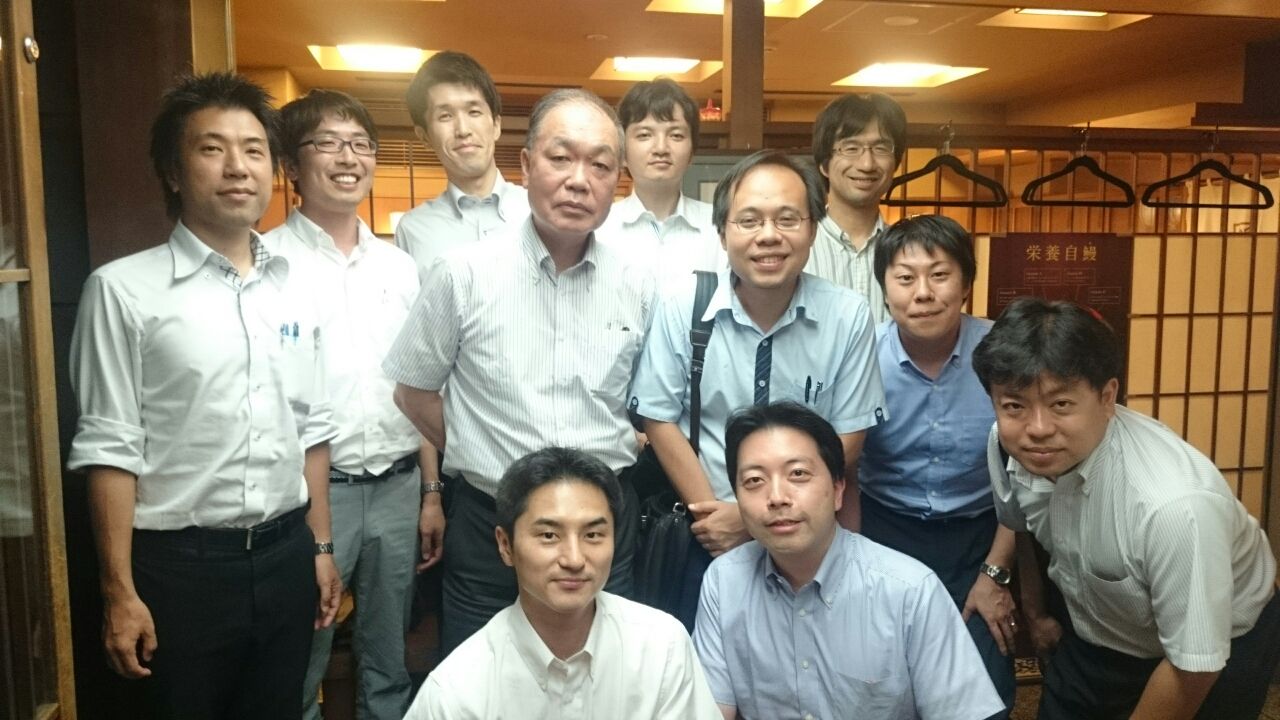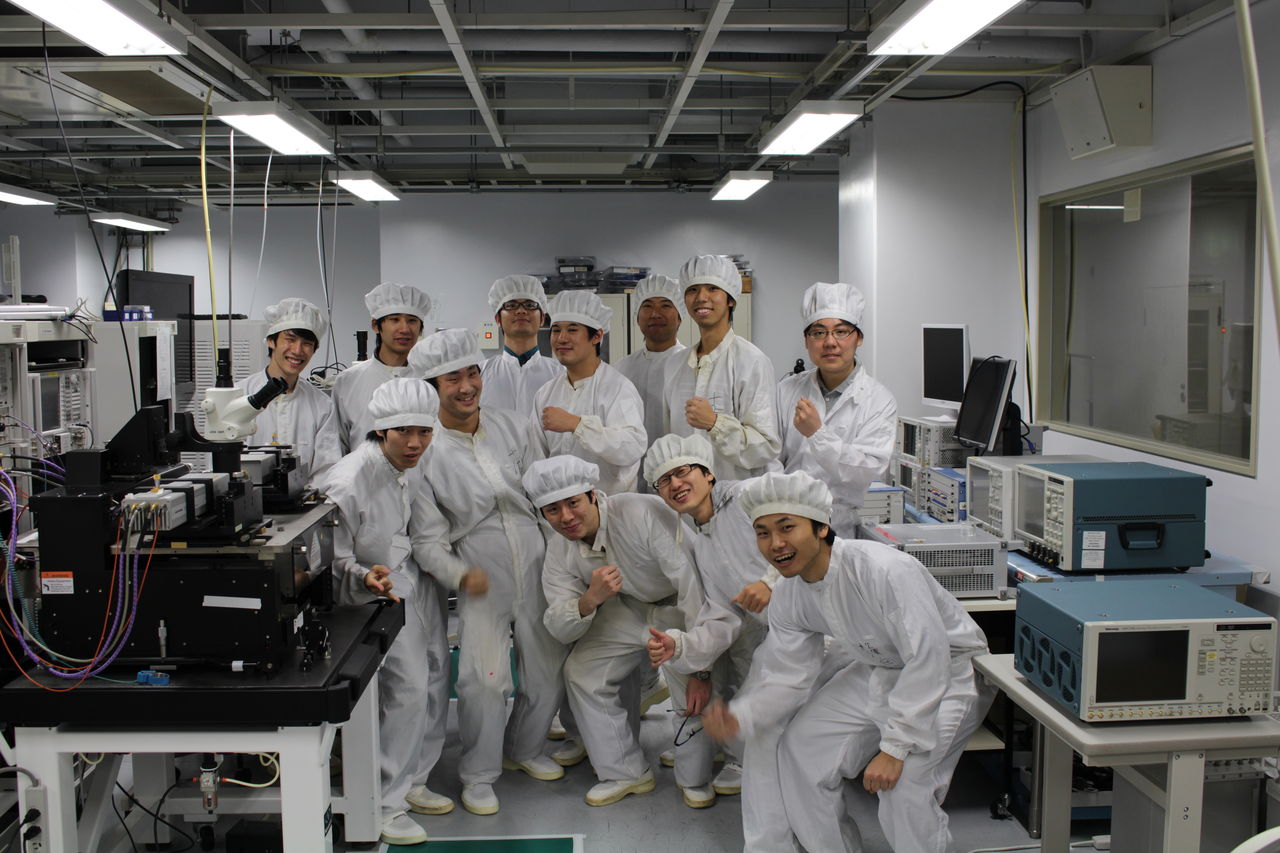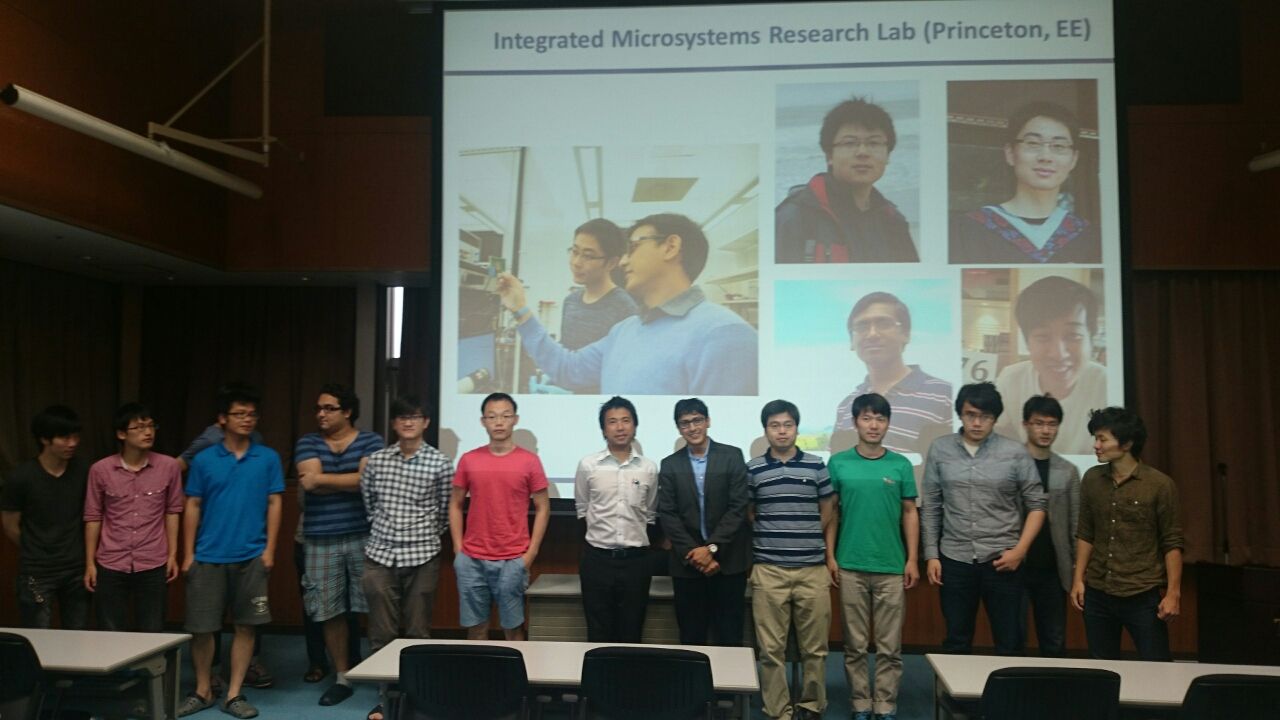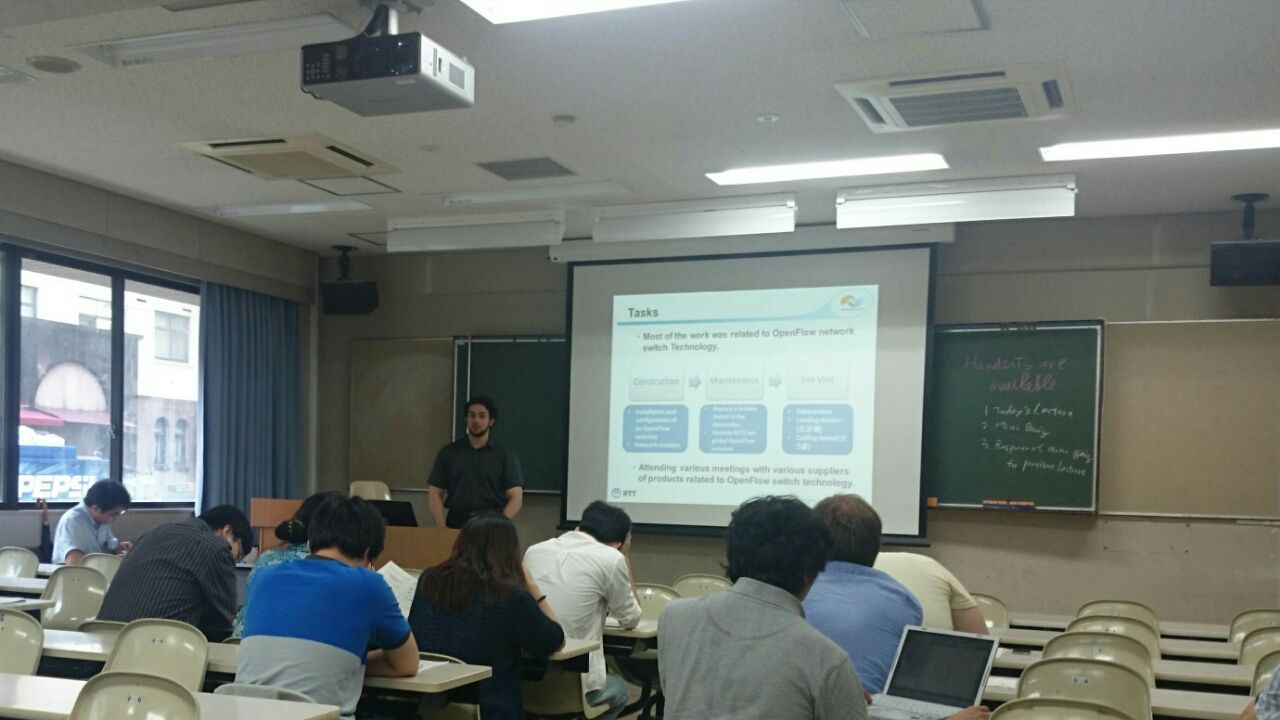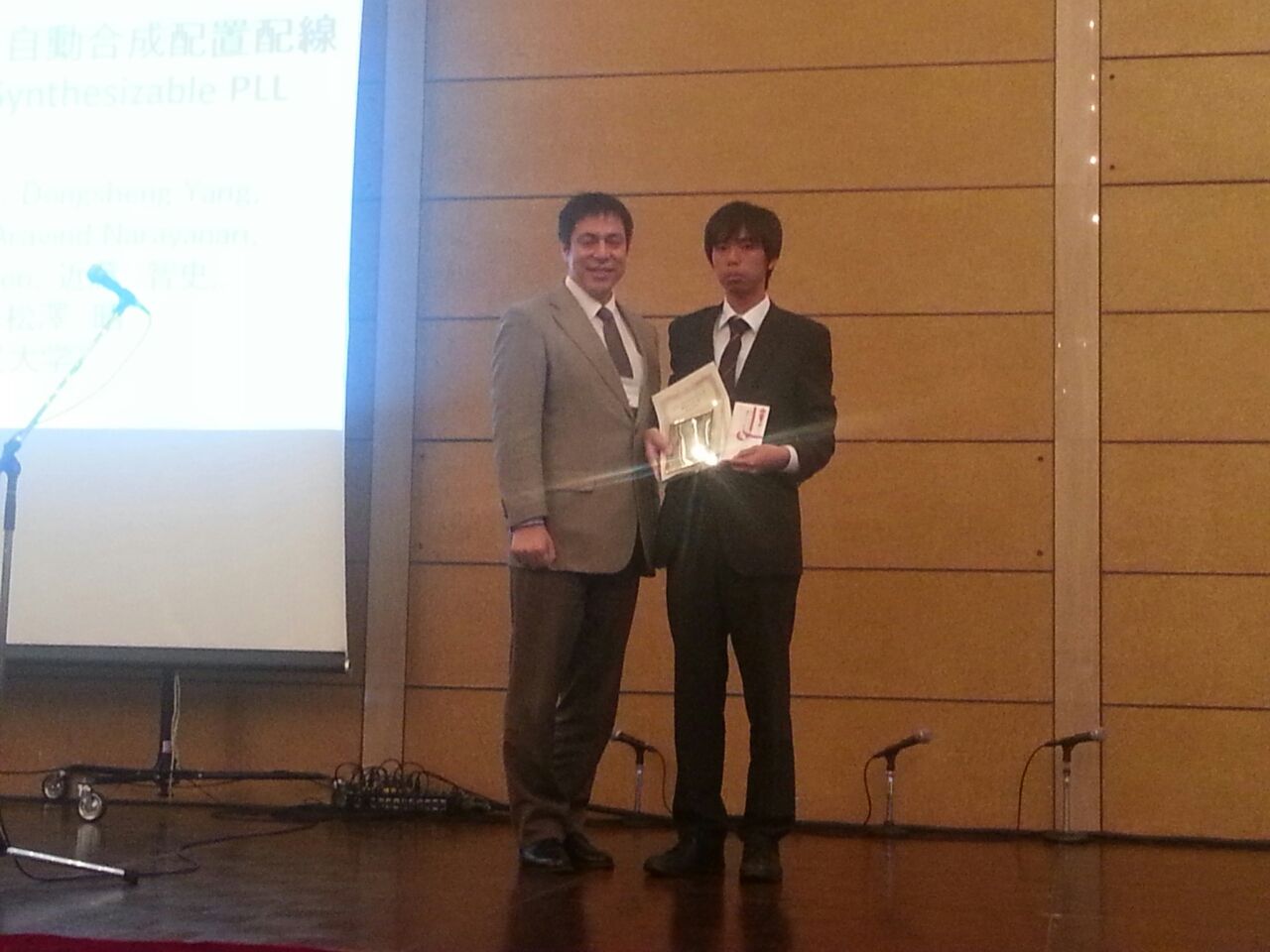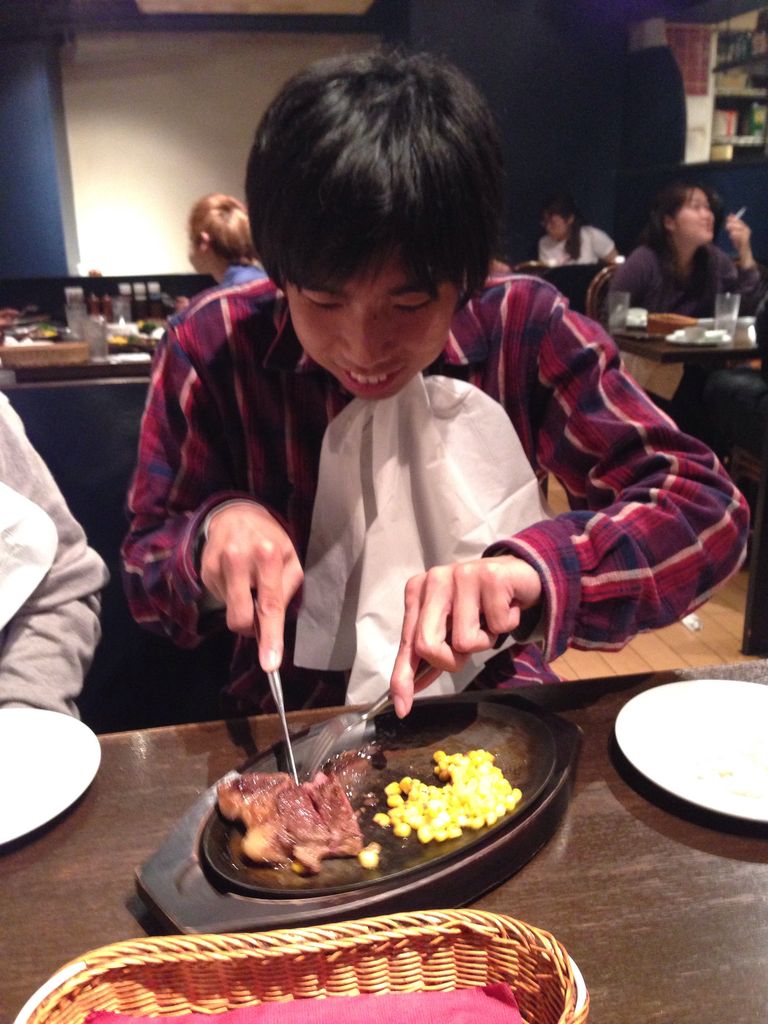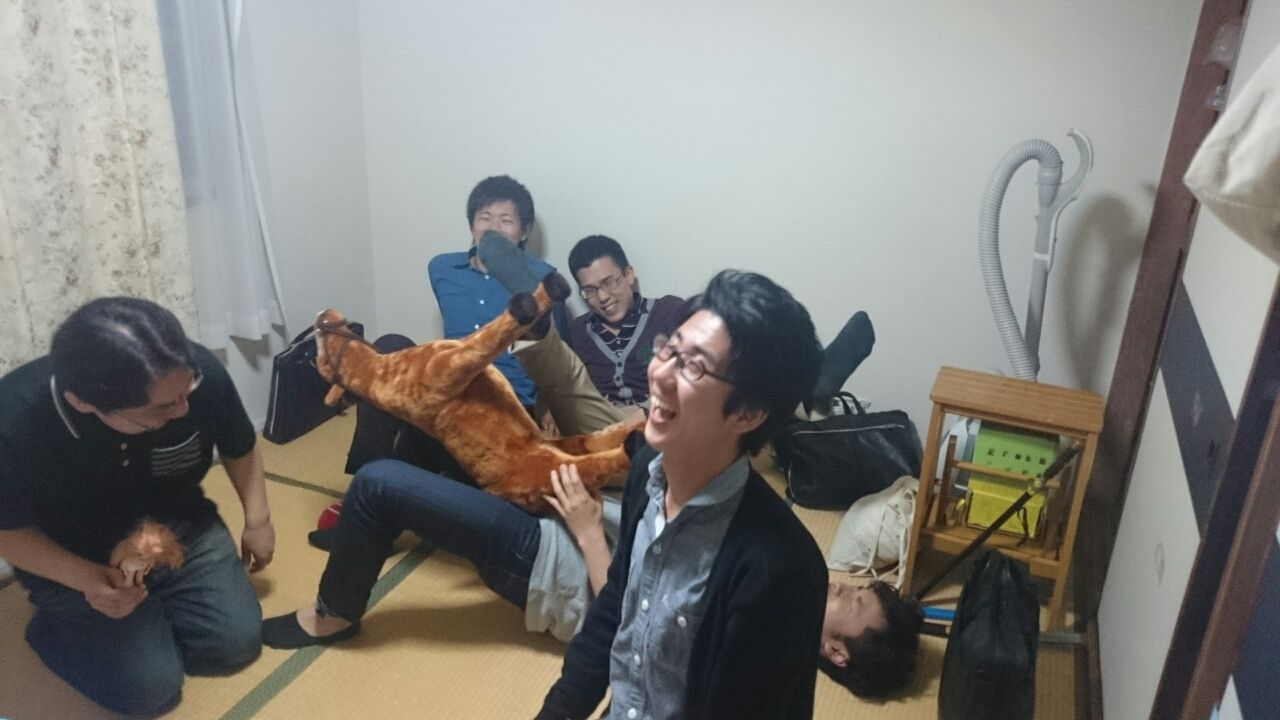新着情報
自由が丘
自由が丘で松澤先生にごちそうになりました! image
published on
測定室の大掃除
テープアウトの合間を縫って、測定室の大掃除をしました! サボった人一目瞭然! IMG_7242
published on
VLSI Circuits
Chenさんが,京都で開催中のVLSI Circuitsで発表しました。 A 9.35-ENOB, 14.8 fJ/Conv.-Step Fully-Passive Noise-Shaping SAR ADC, Z. Chen, M. Miyahara and A. Matsuzawa, Tokyo Institute of Technology, JapanThis paper presents an opamp-free solution to implement noise shaping in a successive approximation register analog-to-digital convertor. The comparator noise, incomplete settling error of digital-to-analog convertor and mismatch are alleviated. Designed in a 65 nm CMOS technology, the prototype realizes 58 dB SNDR at 50 MS/s sampling frequency. It consumes 120.7 μW from a 0.8 V supply and achieves a FoM of 14.8 fJ per conversion step. DSC_4018
published on
Kaushik Sengupta先生、来学
Kaushik Sengupta先生にご講演頂きました! image
published on
講演会案内: Prof. Kaushik Sengupta, Princeton University
下記講演会を開催します。 Kaushik Sengupta先生は,CMOSによるミリ波・テラヘルツで活躍される気鋭の先生です。 ご興味ありましたら,ご連絡ください。 Title: From `DC to Daylight’: Reunifying the Electro-magnetic Spectrum in Silicon and the Opportunities it Opens up Speaker: Prof. Kaushik Sengupta, Princeton University Date: 6/16(Tue) 14:30-15:30Place: 東京工業大学大岡山キャンパスAbstract:After Maxwell reunified the Electro-magnetic spectrum in the 1850s,the spectrum broke on frequency lines into separate, specialized andmature disciplines of study. Almost a century and half later, we see areunification of electromagnetism in one single platform, opening upopportunities to create cutting-edge technology for thenext-generation systems. Having the ability to synthesize, control andmanipulate such a large portion of the spectrum (DC-THz) with abillion transistors in a single platform, silicon, opens up a plethoraof opportunities spanning a wide range of applications in sensing,imaging, spectroscopy, medical diagnostics, communication and beyond.Such unprecedented levels of integration can be leveraged only weremove the artificial partitions among various levels of abstractionin system design such as analog, digital, electromagnetics, antenna,communication and control theory and take a holistic approach. In this talk, I will show some practical examples how such an approachenables us to go beyond transistor speed limits into the terahertzfrequency range (0.3-3 THz), demonstrating the first CMOS THzbeam-scanning array, an all-silicon active terahertz imaging systemand generation and radiation of pico-second pulses capable of dynamicspectral shaping. The intersection of analog, digital and RF createsnew opportunities for novel and robust system design and, we willdiscuss a fully integrated, closed loop and autonomous self-healingmm-wave power amplifier capable mitigating process variations, loadmismatches and unintentional failures. If time permits, we willdiscuss how manipulating optical fields in silicon can lead tomultiplexed sensor arrays in CMOS for bio-molecular diagnostics. Bio: Kaushik Sengupta received the B.Tech. and M.Tech. degrees inElectronics and Electrical Communication engineering from the IndianInstitute of Technology (IIT), Kharagpur, India, both in 2007, and theM.S. and Ph.D. degrees in electrical engineering from the CaliforniaInstitute of Technology, Pasadena, CA, USA, in 2008 and 2012,respectively. In February 2013, he joined the faculty of the Department ofElectrical Engineering, Princeton University, Princeton, NJ, USA. Hisresearch interests are in the areas of high-frequency integratedcircuits (ICs), electromagnetics, optics for various applications insensing, imaging and high-speed communication. Dr. Sengupta was therecipient of the IBM Ph.D. fellowship (2011–2012), the IEEESolid-State Circuits Society Predoctoral Achievement Award, the IEEEMicrowave Theory and Techniques Society (IEEE MTT-S) GraduateFellowship, and the Analog Devices Outstanding Student Designer Award(2011). He was also the recipient of the Charles Wilts Prize in 2013from the Department of Electrical Engineering, California Institute ofTechnology for the
published on
2015 Symposium on VLSI Circuits国内報告会 & Asad Abidi教授(UCLA)講演会
Symposium on VLSI CircuitsはISSCCとともに世界最高峰の集積回路分野の国際学会です。本年は6月16日から19日までの4日間にわたり、京都のリーガロイヤルホテルにて開催されます。IEEE SSCS Japan/Kansai Chapter では例年、本学会開催直後に、国内報告会として、日本からの発表論文の中からいくつかを選択し、ご講演者の方に日本語で再度ご講演して頂く機会を設けています。今年も下記の通り、国内報告会を開催いたしますので、奮ってご聴講いただきますようご検討をお願い申し上げます。 今年は、UCLAのAsad Abidi教授をお招きし、報告会に続き、教授の最新のご研究に関する講演会(英語)を企画いたしました。あわせてご聴講をご検討いただければ幸いです。 記 ============================================= 2015 Symposium on VLSI Circuits国内報告会 Asad Abidi教授(UCLA)講演会 ============================================= ■日時と場所日時: 2015 年 6 月 22 日(月) 09:30-17:00(受付は 9:00 から) 場所: 東京工業大学 大岡山キャンパス 蔵前会館ロイ
published on
末松安晴賞
「CMOSミリ波無線機の研究開発」について,電子情報通信学会から末松安晴賞を頂きました。 IMG_3295
published on
OBのMusaさんの授業
卒業生のMusaさん(現NTT研究所)の初授業に潜入中。 image
published on
Tokyo Tech Bulletine
Tokyo Tech Bulletinに掲載頂きました。 ガラスが汚くて申し訳ありません。。。
published on
IEEE Journal of Solid-State Circuits (JSSC)に掲載
卒業生のJames Linさんの論文がJSSCに掲載されました。 An Ultra-Low-Voltage 160 MS/s 7 Bit Interpolated Pipeline ADC Using Dynamic Amplifiers
published on
B4の加藤です
はじめまして、B4の加藤です。遅れましたが、自己紹介記事です。地元は神奈川県の平塚市です。大学まで約1時間半かけて通っていますが、流石に辛くなってきました。来年からは研究室も忙しくなると思われるので、一人暮らしを検討しています。サークルは無線研究部に所属していますが、引退しました。たまに部室に顔を出す程度です。コールサインはJI1CAQです。1アマも持ってます。知らない人にとってはなんのこっちゃという話ですが。無線の回路については資格を取る際に一時的に覚えた程度で殆ど覚えていないので、これから勉強していきます。 最近は運動不足を感じることもあって、週に1回程度プールで泳ぐようにしています。自宅の近くに50mのプールがあるので、基本的にはそこを利用しています。大学の友人が暇な時は大学のプールで一緒に泳いだりもします。こんな感じですが、これからよろしくお願いします。
published on
60GHz帯通信とLTEを協調動作させる通信方式の開発~5G時代の新しい通信プロトコル~
KDDI, Sonyとの共同研究の成果です。60GHz帯通信とLTEを協調動作させる通信方式の開発~5G時代の新しい通信プロトコル~
published on
Tokyo Tech Bulletin
ガラスが汚い。。。 DSC_5410
published on
優秀ポスター賞受賞!
中田さんが、LSIとシステムのワークショップで優秀ポスター賞を受賞しました。おめでとうございます!! image
published on
肉
が食べられて幸せそうな中田さん image
published on
OBと同窓会なう
IMG_20150505_201333 IMG_20150505_201350 IMG_20150505_201353
published on
飲み会
中田さんの携帯に酔っ払いから電話が来ました。岡田先生でした image
published on
研究室飲み会
その後家 image
published on
どーも、どーめです【新M1自己紹介】
こんにちは、はじめまして!同志社大学からきました新M1の堂目正人です。よろしくお願いします! こういった文章を書くのに慣れておりませんので、拙い自己紹介になりますが、しばしお付き合いください。 それでは自己紹介ということで、僕は1992年9月9日生まれ、22歳、乙女座、O型、右利き、身長体重は秘密💛、視力は右1.0左1.0(コンタクト装着時)、足のサイズは26cm、たけのこの里かキノコの山かと聞かれたら断然たけのこの里派、ポカリとアクエリならアクエリ派、チョコボールはキャラメル派、コンビニはファミマ派、おにぎりは安定のシーチキン派、それから、おでんの具といったらやっぱり、、、、 do-demo えっそんなことはどうでもいいって???? んー、では改めまして、僕の出身地の紹介から。出身は京都です。金閣寺の近くに住んでおりました。京都は寺と神社と漬物しかなく、たかだか1300年くらいの歴史しかあらへんような所ですが、平和でのどかな土地どす。(京都風嫌味自慢)訳: 京都は寺と神社がいっぱいあって他の土地にはない古風な街なみが残っているもののそんなに田舎くさくなく、とても住みやすい所です。 現在は祖父の家がある立川市に
published on
【H27ー自己紹介】B4のトゥアンです。
はじめまして 0. 基本情報 B4のファムヴァントゥアンです。(トゥアンと呼んでください) ベトナムから来ました。来日してからもう5年間経ちました。トランプ大会でギリギリ松澤・岡田研究室に配属することができたのでとてもラッキーだと思っています。趣味が特にないが週一回程度サッカーやってます。(チームがあるのでやりたい人がいたら一緒にやりましょう) 1. 故郷 ベトナムなんですが首都のハノイに住んでいるというわけではありません。僕の故郷はこちらです 。(Hải Dươngという町です) <googlemaps-さんから> 故郷の特産はこんなものです。(ライチという熱帯域の果物です。詳しく知りたい人は下のリンクをクリックしてください。) ↓↓↓↓↓↓↓↓↓↓↓↓↓↓↓↓↓↓↓↓↓↓↓↓↓↓↓↓↓↓↓↓↓↓↓↓↓↓↓↓ らいち2 ライチのWikipediaリンク ⇩⇩⇩⇩日本語版 English version ** 2. 日本来てからのルート:** (2010)日本語学校(東京)⇨ (2011)高等専門学校(富山県)⇨ (2014)東工大(東京)⇨ (2015)松澤・岡田研究室 ** 3. 研究室の皆様へ** メンバーがエリートばっかりの研究室に入るのはとても幸だと思っ
published on

